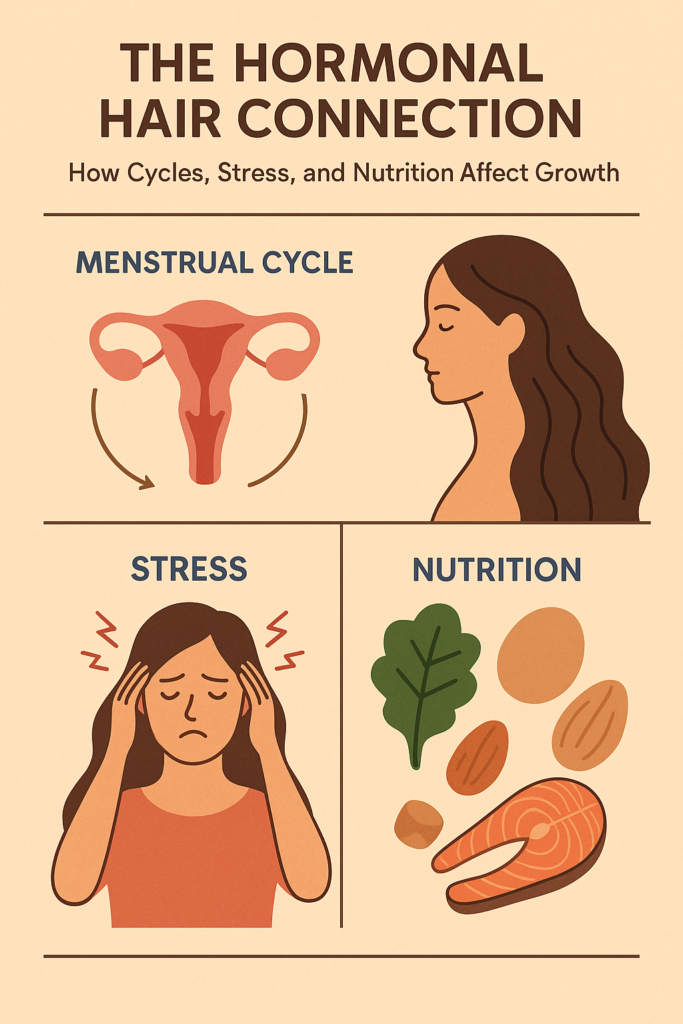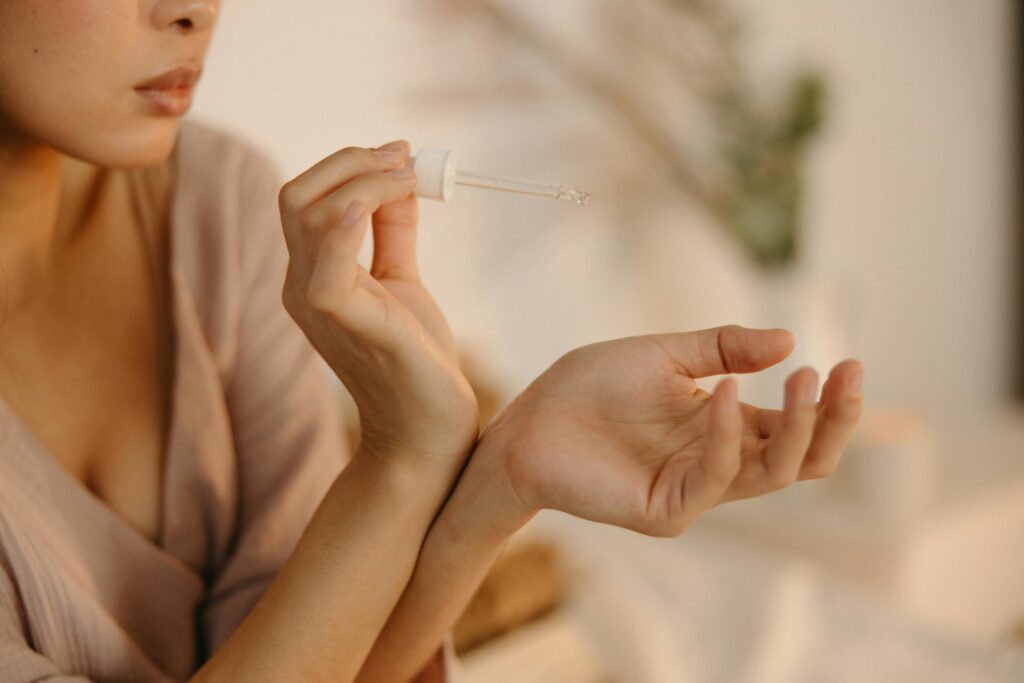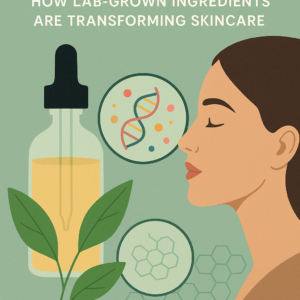Blue Light and Your Skin – The Hidden Damage of Screen Exposure and How to Prevent It
In today’s hyper-connected world, we spend countless hours in front of screens. Whether working on laptops, scrolling through our phones, or binge-watching shows, we are constantly exposed to blue light — a high-energy visible (HEV) light emitted from digital devices. While most of us are aware of blue light’s impact on sleep and eye health, its effect on our skin remains an emerging but critical concern. Recent studies and dermatologist insights reveal that prolonged exposure to blue light can lead to premature aging, hyperpigmentation, and a weakened skin barrier. In this in-depth article, we explore the science behind blue light, its effects on skin health, and evidence-based strategies to protect your skin while staying digitally connected.
1. What Is Blue Light?
Blue light, also known as HEV (high-energy visible) light, is a part of the visible light spectrum, ranging from 400 to 490 nanometers in wavelength. It is present naturally in sunlight, but the growing concern is from artificial sources like:
- Smartphones
- Tablets
- Computer monitors
- LED lighting
Compared to UV rays, blue light penetrates the skin more deeply, reaching into the dermis, where collagen and elastin fibers reside.
2. How Does Blue Light Affect the Skin?
Research suggests that blue light may:
- Generate free radicals, leading to oxidative stress
- Cause inflammation and skin barrier disruption
- Accelerate photoaging, resulting in fine lines and wrinkles
- Increase melanin production, contributing to hyperpigmentation
- Worsen skin conditions such as melasma, acne, and rosacea
One study published in the Journal of Investigative Dermatology found that blue light exposure significantly increased pigmentation in darker skin tones compared to UV exposure alone.
3. Who Is Most At Risk?
While blue light affects all skin types, some groups are more susceptible:
- People with melanin-rich skin (Fitzpatrick types III-VI)
- Individuals with hyperpigmentation or melasma
- People who spend 6+ hours daily on screens
- Those with compromised skin barriers (eczema, rosacea, acne)

4. Signs of Blue Light Damage
Not all blue light damage is immediately visible. Look out for:
- Dullness and uneven tone
- Increased dark spots or pigmentation
- Fine lines appearing faster than expected
- Skin sensitivity and dryness
5. Scientific Studies and Dermatologist Opinions
Numerous dermatologists now emphasize the importance of blue light protection in daily routines. Notable research includes:
- Blue light from digital devices enhances oxidative stress in skin (2019, Oxidative Medicine and Cellular Longevity)
- HEV light increases hyperpigmentation in melanin-rich skin (2018, Journal of Investigative Dermatology)
- Dermatologists like Dr. Whitney Bowe and Dr. Shereene Idriss recommend antioxidant protection and screen-safe skincare.
6. How to Protect Your Skin From Blue Light
Step 1: Use Blue Light-Specific Sunscreens
Look for mineral sunscreens with:
- Iron Oxides
- Zinc Oxide
- Titanium Dioxide
These ingredients offer broad-spectrum protection, including against visible light.
Step 2: Incorporate Antioxidants Into Your Skincare Routine
Antioxidants neutralize free radicals and enhance skin resilience. Key options:
- Vitamin C
- Niacinamide
- Ferulic acid
- Resveratrol
- Green tea extract
Step 3: Adjust Your Screen Settings
- Use night mode or blue light filters
- Reduce screen brightness in dark environments
- Take screen breaks every 20 minutes
Step 4: Apply a Protective Barrier
- Use barrier creams containing ceramides, squalane, and peptides to fortify the skin.
- Consider layering with a setting spray formulated with anti-pollution and blue light protection.
Step 5: Wear Physical Protection
- Use blue light-blocking glasses
- Apply mineral makeup with iron oxides (tinted moisturizers or BB creams)
7. Morning and Night Skincare Routine for Blue Light Protection
Morning Routine:
- Cleanser (gentle and pH balanced)
- Antioxidant serum (vitamin C or niacinamide)
- Barrier moisturizer (with ceramides and peptides)
- Blue light-protective sunscreen (SPF 30+ with iron oxides)
- Optional: Tinted SPF or foundation with physical blockers
Night Routine:
- Cleanser (double cleanse if wearing makeup)
- Hydrating toner or essence
- Treatment serum (retinol or bakuchiol, alternating nights)
- Antioxidant serum (resveratrol or green tea)
- Rich moisturizer
- Optional: Overnight mask for recovery
8. Best Skincare Products for Blue Light Protection
| Category | Product Recommendation |
|---|---|
| Antioxidant Serum | SkinCeuticals C E Ferulic, The Ordinary Niacinamide 10% |
| Blue Light Sunscreen | Colorescience Sunforgettable Total Protection Face Shield |
| Tinted Mineral SPF | EltaMD UV Elements Tinted Broad-Spectrum SPF 44 |
| Barrier Cream | La Roche-Posay Toleriane Double Repair Moisturizer |
| Night Mask | Youth to the People Superberry Hydrate + Glow Dream Mask |
9. The Future of Blue Light Skincare
With blue light now considered a long-term skin aggressor, skincare brands are investing in new technologies:
- Encapsulated antioxidants for sustained delivery
- Smart serums that respond to screen exposure
- AI-powered skincare routines based on screen time tracking
Brands like Murad, Dr. Dennis Gross, and ISDIN are launching blue light-specific product lines, signaling a shift toward comprehensive digital defense.
Also read:Slugging 2.0
10. Final Thoughts: Digital Age, Digital Skin Defense
As our lives become more digital, so must our skincare. Blue light damage is real, but it’s also manageable with the right products, routines, and awareness. Think of your skincare routine as your skin’s daily armor against the modern environment.
Invest in blue light protection now, and your skin will thank you later with a glow that defies screen time. Because in the digital age, beauty is about balance — between connectivity and conscious self-care.
Coming Soon: A deep dive into the microbiome and why gut-skin connection is the next big beauty frontier.
Holistic Skincare
Holistic Skincare – Blending Traditional Remedies with Modern Science In the ever-evolving world of beauty,…
A Conexão Capilar Hormonal
The Hormonal Hair Connection – How Cycles, Stress, and Nutrition Affect Growth Hair is often…
Biotech Beauty – How Lab-Grown Ingredients Are Transforming Skincare
The Rise of Biotech in the Beauty World In recent years, the beauty industry has…
Natural Fragrance Oils vs. Synthetic Perfumes
Natural Fragrance Oils vs. Synthetic Perfumes – What’s Better for Your Skin? Perfume is often…
Herbal Face Steaming Rituals from Around the World
Herbal Face Steaming Rituals from Around the World – Detox, Relax, Glow In today’s fast-paced,…
The Crystal Skincare Trend – Beauty Tools Charged with Energy
In the ever-evolving world of beauty and wellness, a fascinating trend is capturing the attention…
Forest Beauty
Forest Beauty – How Nature-Based Rituals Like Shinrin-Yoku Enhance Skin and Mood In an age…
DIY Rice Water and Fermented Rinses
DIY Rice Water and Fermented Rinses – Do They Really Work for Hair Strengthening? In…
Caffeine for Hair Growth
Caffeine for Hair Growth – What the Science Says and How to Use It In…
Hair Loss After COVID
Hair Loss After COVID – Understanding Telogen Effluvium and How to Treat It Hair loss…
The Rise of Ayurvedic Hair Care in the U.S.
The Rise of Ayurvedic Hair Care in the U.S. – Herbs and Rituals for Stronger…
Scalp Health Is the New Skincare
Scalp Health Is the New Skincare – Treatments That Start at the Root In the…
The Retinol Revolution
The Retinol Revolution – Gentle Alternatives for Sensitive Skin Without Sacrificing Results Retinol has long…
The Power of Probiotic Skincare
The Power of Probiotic Skincare – Balancing the Skin Microbiome Naturally The term “microbiome” has…
Blue Light and Your Skin
Blue Light and Your Skin – The Hidden Damage of Screen Exposure and How to…
Slugging 2.0
Slugging 2.0 – Advanced K-Beauty Hydration Technique That’s Taking Over TikTok Beyond Basic Slugging In…
The Rise of Skin Cycling
The Rise of Skin Cycling – How to Build a Rotating Skincare Routine for Maximum…
Reflexology and Its Effects on Health and Beauty
Healing Through the Feet – Reflexology and Its Effects on Health and Beauty In today’s…
Natural Remedies for Skin Spots
Natural Remedies for Skin Spots – Little-Known Alternatives That Really Work Skin spots, also known…
Therapeutic Tattoos
Therapeutic Tattoos – How Tattoos Can Help Boost Self-Esteem for People with Scars Scars tell…
Functional Nutrition for Skin and Hair
Functional Nutrition for Skin and Hair – How Specific Vitamins and Minerals Impact Beauty Your…
Natural Hair Smoothing
Natural Hair Smoothing – Chemical-Free Alternatives for Sleek, Straight Hair For those seeking sleek, straight…
Skin Flooding
Skin Flooding – The New Intensive Hydration Technique for Radiant Skin The skincare world is…
Sunbathing and Collagen Production
Sunbathing and Collagen Production – How to Balance Sun Exposure Without Damaging Your Skin Sunlight…
Teas and Infusions for Glowing Skin
Teas and Infusions for Glowing Skin – Natural Recipes for Radiant Beauty The secret to…
How Sleep Quality Affects Beauty
How Sleep Quality Affects Beauty – Techniques to Improve Sleep and Skin We often hear…
Borage Oil for PMS and Skin
Borage Oil for PMS and Skin – How This Supplement Can Help Borage oil is…
Aromatherapy for Stress and Beauty
Aromatherapy for Stress and Beauty – Essential Oils That Balance Mind and Body Aromatherapy has…
Hormones and Skin Aging
Hormones and Skin Aging – How Balancing Hormones Can Improve Appearance Aging is a natural…
Ancestral Beauty
Ancestral Beauty – Natural Techniques Used by Different Cultures Throughout History Beauty has been an…



































